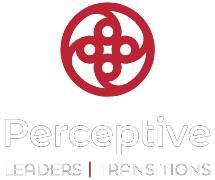
Challenge:
A mid-market company had been through an intensive period of growth which included expanding into global markets and had grown its leadership to include over sixty leaders at the Director level and above.
Earlier that year, Perceptive had been brought in by the CEO to work with the Executive Leadership Team (ELT) in a facilitated Leadership Team Development process.
Senior Leadership Teams (or SLT’s) are a potentially powerful resource, but they are often ill-defined, lacking a clear purpose and structure, which inhibits their ability to perform optimally.
One of the realizations for the team was that they would need to better leverage their next level leaders who were collectively referred to as their Senior Leadership Team (SLT). This would be important for the business to execute on its strategic priorities and solve enterprise-wide issues that had emerged during a period of rapid growth.
The company wanted to create a Leadership Development Program for these SLT leaders. This would be the first leadership team development program of its kind for the company.
Perceptive was brought back in to help the ELT take a deeper look at the functioning of its SLT and to help the VP of HR develop a custom Leadership Development Program for those leaders.
Solution:
Defining the Role of the Senior Leadership Team (SLT)
We worked with the ELT to determine what would be required to better leverage this team moving forward. The ELT discussed and agreed upon changes it would need to make which included achieving better alignment between the work of the ELT and SLT and providing a clearer purpose or charter for the SLT; just as they had done for themselves as an ELT.
Leadership Development Extended to SLT Organizational Leaders
We worked with the VP of Human Resources to design a custom Leadership Program that would extend the work the ELT had done to its next level leaders and build leadership competencies in key areas.
A three-day facilitated leadership development program was designed to utilize the same leadership frameworks and tools now being actively used by the ELT. A critical element in the design was determining how the ELT leaders would be involved in the program in ways that were necessary to achieve better alignment between the ELT and its next level leaders and to support the learning process for these leaders.
Creating Alignment Between the ELT and SLT
One of the program objectives was to achieve better alignment between the ELT and SLT leaders. While the ELT leaders each worked closely with their direct reports on the SLT, those leaders did not have an effective mechanism to work well with the ELT, or with each other as a team.
A key element in creating alignment would be an open sharing and discussion between the two teams. Adequate time was allocated to allow the ELT to share more about the strategic priorities and discuss the enterprise-wide issues that that were now limiting the company.
Building Key Leadership Competencies to Lead Cross-Functionally
Alignment between an ELT and SLT, each as critical teams for the business, holds the potential to advance organizational capability in powerful ways.
Another program objective was to build leadership capabilities in working collaboratively across the organization in ways that would be necessary to solve enterprise-wide issues. Four key leadership competencies, including collaboration, had been identified as most important in leading cross-functionally and these became the core elements in the competency building segment of the program.
A key element in the design was to include what we refer to as a Team Working Session. In this working session, the objective is to arrive at a shared understanding of an enterprise-wide issue, an appreciation for the challenges it presents across the organization and begin to move forward as a team to resolve it.
Results:
The SLT leaders reported that it was the first time they had come together in a room, as an SLT, in this way. Several commented that they had been with the company for many years, some their entire career, and had never had the opportunity to be in the room together in quite this way.
Perhaps most memorable was the impact of the group sharing the results of one of the self-assessment tools, and more specifically the ELT sharing with the SLT, in an interactive exercise. The room literally lit up with “ah has” as the participants came to get to know and understand each other better and could put past behaviors of colleagues in perspective and see them in a new light.
The Chief Executive and ELT reported that it was extremely helpful to have shared understanding of the strategic initiatives and enterprise-wide issues and, importantly, a shared language – including frameworks and tools – between the two groups. The ELT recognized that their communication as an ELT with this group of SLT leaders was historically poor and they committed to remedying this.
Since these sessions, the ELT is meeting monthly with the SLT with a focus on staying aligned on the strategic priorities and providing a forum for staying connected on resolving the thorny enterprise-wide issues that they needed to solve together.
Note: To honor confidentiality and protect the privacy of our clients we do not use names and have altered possibly identifying details in this Case Study.
About Perceptive Leaders LLC
Perceptive is a boutique leadership development and professional transitions consulting firm based in Denver, Colorado serving clients in the US and Canada, since 2005. We have worked with over 1,000 senior organizational leaders and accomplished career professionals to help them recognize opportunities for impactful and substantive change and how to realize that transformational change. For more than 15 years, Perceptive has been helping leaders and their teams transform their leadership. For more information, visit perceptiveleaders.com.
© Perceptive Leaders, 2022. All rights reserved.


